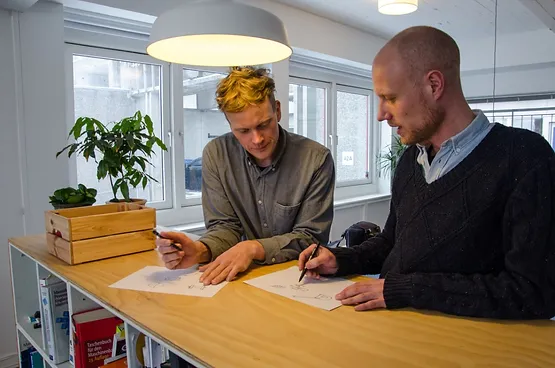Five years ago, we made a huge effort to implement our own version of the Scrum methodology in Lolle & Nielsen Inventions. Today Scrum boards and backlogs aren’t a part of the office lingo anymore. But recently we realized just how integrated the methods have become without us even noticing it.
The Scrum methodology was initially celebrated as a new kind of framework for developing software in a fast and agile way. But five years ago, we spend a lot of time tweaking the methods for what we do and implemented it in a big way: The lingo was mandatory, scrum-boards was installed on the walls and daily scrum-meeting was a reality.
(If you didn’t read our 3-part series on Scrum from 2017 you can find it right here: https://www.lolle-nielsen.com/blog/tag/scrum)
After formalizing the process, it slowly slipped into the background as we steadily got more and more project up and running. At least the physical signs of Scrum did.
Not that long ago we realized – during an interview about our processes – that the methodology is still a surprisingly big part of our process. We’re not following it to the letter anymore and the Scrum boards are not frequently updated anymore. But Scrum has sneaked its way into the back of our minds and become an integrated part of how we do a project.

Methodology without the pain
We’re not consistently dividing our projects into 4-weeks sprints anymore. But the process of dividing a project into sprints with clearly defined targets (length depend of the project) and then breaking the sprints into a series of tasks is how we do things. Just like Scrum – but in a more informal way.
At the same time, we’ve been increasingly aware of more than just the product: In every “sprint” we are considering market, production and concept – and involving third parties to validate when it makes sense – as those perspectives are just as important as the product itself.
A big part of the answer to how we’re able to run so many projects at the same time today is Scrum and how it has become a big part of our culture. And even though we don’t use a bunch of physical artefacts to emphasize our method anymore, we’re pretty sure this culture shift wouldn’t have been as successful without the very conscious and persistent effort in the beginning.

